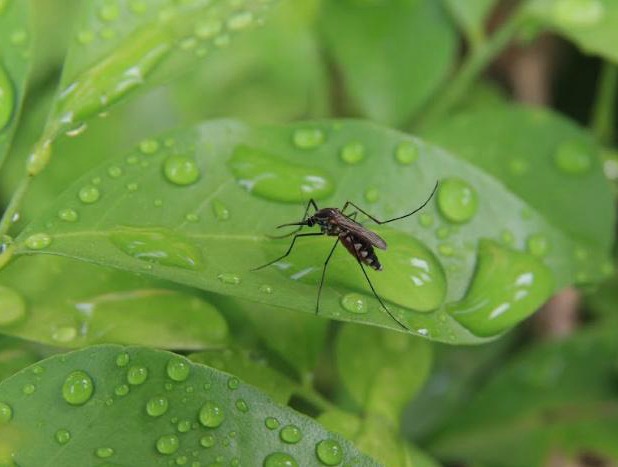
How to Combat Those Pesky Pests
The balance between beauty and the beasts

Your landscape should be a place of beauty. It should not be a feeding ground for insects and diseases. Without the correct oversight, however, your landscape could make the perfect habitat for pesky pests.
When designing your landscape, you must take into consideration your locale, seasonal climate conditions, prevalent insects, and pests when choosing which plantings will flourish and the best mulch options to protect them. A variety in the size and styles of plants will create microclimates that offer beneficial protection from insects and harsh weather.
What's Eating Your Plants
While the experts can't know for certain which pests will be prominent from season to season due to a variety of factors (Was it wet, dry, cold, or warm?), there are some insects common to certain regions.
The North: Mosquitoes, aphids, caterpillars, Japanese beetles, spotted lanternfly (prevalent in ornamentals and trees).
The South: Chinch bugs (found in grasses), aphids, mealybugs, spider mites, tent caterpillars, bagworms, webworms, Japanese beetles, and ants (both fire and carpenter).
The East: Bluegrass weevils, Chinch bugs, aphids, mealybugs, spider mites, tent caterpillars, bagworms, webworms, Japanese beetles.
The West: Mites, grubs (more prevalent with mild winters), aphids, honey locust, lace bug, Japanese beetles, bluegrass weevils, slugs, snails.
Learn more about how to win the war against mosquitoes.
Choose Your Plants Wisely
Not all of these destructive pests can be eliminated "naturally.” However, the experts know certain plants help better deter some of them.
Marigolds: Their fragrant blossoms deter mosquitoes and aphids.
Daffodils: Deer will avoid these beauties due to their nasty taste.
Chrysanthemums: Their pungent odor deter insects.
Lavender: Although people love the sweet fragrance, flies, fleas, moths, mosquitoes, and many other insects do not. Placing plants near doorways helps keep out the flies. They attract bees, so avoid planting near building entrances and high traffic areas. As an added bonus, the natural oils can be made into an effective mosquito deterrent. Try hanging dried lavender to keep your clothes safe from moths.
Catnip: It is part of the mint family, which commonly repels mosquitoes. Catnip drives away flies and deer ticks.
Other Herbs: Rosemary, Lemon Thyme, Lemon Balm, and Lemongrass all deter mosquitoes. Rosemary and Fennel deter snails and aphids. Spearmint and Chives deter away Japanese beetles. Dill deters aphids and spider mites.
Choose Your Mulch Wisely
When pests have food, water, and a place to breed, they will thrive. Certain mulch materials can help deter insects and pests. Learn more about the best mulch material for commercial property.
Organic Choices: The natural oils and chemicals in cedar and hemlock chips help to deter and inhibit sowbugs, millipedes, centipedes, snails, and slugs.
Inorganic Choices: Gravel, river stone, lava rocks, and seashells will neither invite nor repel insects. Though it may be a little costlier upfront, it doesn't breakdown like its organic counterparts, so it's not necessary to replace as often.
The first step to laying down mulch should be to determine how much of it is remaining from last year. The goal is to maintain a level of 2 to 3 inches. The second step is to avoid mounding around the base of your trees or shrubs as this promotes bark rot and other bark and trunk diseases. One to 3 inches from trunk bases is the ideal distance.
Trust the BrightView Professionals
Your commercial landscape team of professionals at BrightView has the experience and knowledge to help you reduce your chances of unwelcome pests. Let us help you design a landscape full of beauty and not one of the beasts.



